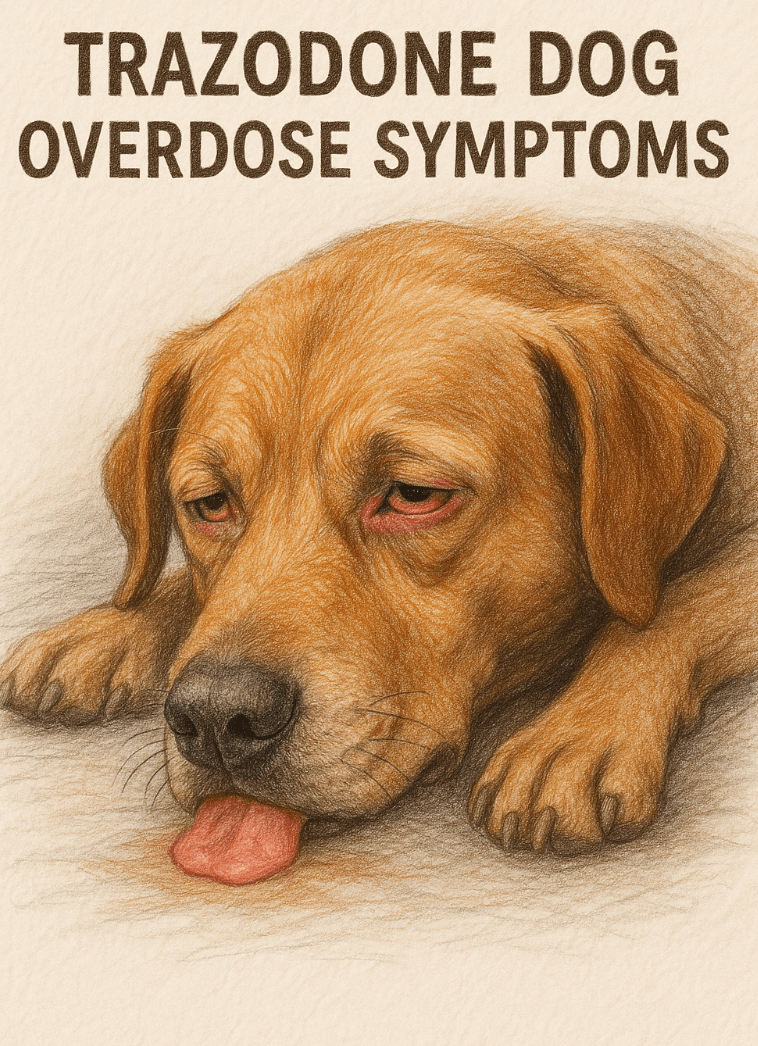How to Tell If a Dog Has Had Puppies: A Comprehensive Guide
If you’ve recently adopted or encountered a dog and are wondering whether she has had puppies in the past, you’re not alone. Many pet owners and rescuers face this question when trying to understand a dog’s history. While it may seem tricky to determine, there are several physical, behavioral, and medical signs that can help you figure it out. Whether you’re a curious owner or a rescuer piecing together a dog’s backstory, this guide will walk you through the telltale signs of a dog that has given birth. Let’s explore how to identify if a dog has had puppies and what steps to take next.
Physical Signs That a Dog Has Had Puppies
One of the most reliable ways to determine if a dog has had puppies is by observing her physical condition. Pregnancy and childbirth leave lasting changes on a dog’s body, and these signs can often be detected even months or years later. Here’s what to look for:
Enlarged or Sagging Abdomen: A dog that has carried puppies may have a slightly sagging belly due to stretched abdominal muscles.
Mammary Gland Changes: The mammary glands may appear larger or more prominent, especially if the dog has nursed puppies.
Teats Appearance: The teats may be more elongated or darker in color compared to those of a dog that has never been pregnant.
Loose Skin Around the Belly: Pregnancy stretches the skin, which may remain looser even after the puppies are born.
Scarring or Stretch Marks: Some dogs may have visible stretch marks or minor scarring around their abdomen from carrying a litter.
These physical signs can provide strong clues about a dog’s reproductive history, but they should always be considered alongside other factors like behavior and medical history.
Behavioral Indicators That a Dog May Have Had Puppies
In addition to physical signs, a dog’s behavior can also hint at whether she has experienced motherhood. Dogs that have raised puppies often display certain maternal instincts or habits that persist long after the puppies are gone. Here’s what to observe:
Nesting Behavior: A dog that has had puppies may still exhibit nesting tendencies, such as gathering blankets or toys into a cozy pile.
Protective Instincts: She might show heightened protectiveness over objects, people, or other animals, mimicking her past role as a mother.
Gentle Handling of Objects: Some dogs carry or cradle toys gently, reminiscent of how they handled their puppies.
Increased Affection or Clinginess: A dog with maternal experience may seek more attention or display nurturing behaviors toward humans or other pets.
Anxiety Around Separation: Dogs that have bonded deeply with their puppies may feel anxious when separated from their family or familiar surroundings.
While behavioral signs can be subtle, they often align with a dog’s past experiences. Observing these traits can help paint a clearer picture of her history.
Check this guide 👉Chew Bones for Puppies: Best 7 Expert Tips!
Check this guide 👉Understanding Dog Pregnancy Week by Week: Best 7 Tips!
Check this guide 👉How Many Times Can a Dog Get Pregnant? Best 7 Tips!

Physical Signs | Behavioral Signs |
|---|---|
Enlarged or sagging abdomen | Nesting behavior with blankets or toys |
Prominent or enlarged mammary glands | Protective instincts toward others |
Elongated or darker teats | Gentle handling of objects |
Loose or stretched skin | Increased affection or clinginess |
Scarring or stretch marks | Anxiety during separation |
Medical Tests to Confirm If a Dog Has Had Puppies
If you’re unsure about the physical and behavioral signs, veterinary tests can provide more definitive answers. These methods are particularly useful for rescue dogs with unknown histories. Here’s how a vet can help:
Ultrasound or X-Ray: Imaging can reveal changes in the uterus or abdominal area caused by previous pregnancies.
Hormone Testing: Blood tests can detect hormonal changes associated with pregnancy and lactation.
Palpation Exam: A veterinarian can feel for physical changes in the abdomen or mammary glands during a hands-on examination.
Spay Status Verification: If the dog has been spayed, the vet can confirm whether it was done before or after potential pregnancies.
Dental Age Assessment: While not directly related to pregnancy, estimating a dog’s age can help determine if she’s old enough to have had puppies.
Consulting a veterinarian ensures accurate information and helps rule out other health concerns that may mimic signs of past pregnancies.
Caring for a Dog That Has Had Puppies
Whether you’ve confirmed that your dog has had puppies or are simply preparing for the possibility, providing proper care is essential. Here are some steps to ensure her well-being:
Monitor Her Health: Keep an eye on her mammary glands for signs of infection or abnormalities, especially if she recently gave birth.
Provide Nutritious Food: Ensure she receives a balanced diet rich in protein and vitamins to support recovery and overall health.
Encourage Gentle Exercise: Regular, low-impact activity can help tone abdominal muscles stretched during pregnancy.
Check for Behavioral Changes: Address any anxiety or clinginess with patience and positive reinforcement to help her adjust.
Schedule Regular Vet Visits: Routine check-ups can catch potential issues early and ensure she remains healthy.
By focusing on her physical and emotional needs, you can help your dog thrive, regardless of her past experiences.
Debunking Myths to Better Understand Your Dog’s History
There are several misconceptions about how to tell if a dog has had puppies, and misunderstanding these signs can lead to confusion. By addressing common myths, you can better interpret your dog’s condition. Here’s what you need to know:
Myth: All Dogs That Have Had Puppies Will Have Stretch Marks: Not all dogs develop visible stretch marks; some may only show subtle physical changes.
Myth: Behavioral Changes Are Always Obvious: Some dogs may not display noticeable maternal behaviors, especially if they’ve been separated from their puppies for a long time.
Myth: Only Female Dogs Show Signs of Past Pregnancies: While this is true, other health issues in female dogs can mimic pregnancy-related changes, so professional diagnosis is key.
Myth: A Spayed Dog Cannot Have Physical Evidence of Pregnancy: If a dog was spayed after having puppies, physical signs like enlarged mammary glands may still be present.
Myth: Age Alone Determines Whether a Dog Has Had Puppies: Younger dogs can also have had litters, so age alone isn’t a reliable indicator.
Understanding these misconceptions ensures you approach the situation with accurate knowledge and avoid jumping to conclusions.
Differentiating Between Pregnancy and Other Health Conditions
Some health issues or conditions can mimic the signs of past pregnancies, leading to confusion. It’s important to rule out these possibilities to avoid misinterpreting your dog’s condition. Here’s what might resemble pregnancy-related changes:
False Pregnancy: A dog may exhibit nesting behavior or mammary gland enlargement without actually being pregnant.
Mammary Gland Tumors: Lumps or swelling in the mammary area could indicate tumors rather than past pregnancies.
Weight Gain or Obesity: A sagging abdomen might result from excess weight rather than stretched skin from carrying puppies.
Hormonal Imbalances: Conditions like hypothyroidism can cause changes in teat size or abdominal appearance.
Infections or Inflammation: Swollen mammary glands might be due to mastitis or other infections rather than nursing puppies.
If you’re unsure whether the signs point to pregnancy or another issue, consult a veterinarian for a definitive diagnosis.
Providing Care When You’re Unsure About Past Pregnancies
Rescue dogs often come with unknown histories, making it challenging to determine if they’ve had puppies. Regardless of their past, providing consistent care and attention can help them adjust to their new life. Here’s how to support a rescue dog effectively:
Create a Safe Space: Offer a comfortable bed or crate where your dog can retreat and feel secure.
Build Trust Gradually: Spend time bonding through gentle interactions, play, and training to establish a strong relationship.
Monitor for Stress Signals: Watch for signs of anxiety or fear, which may indicate a difficult past involving motherhood or abandonment.
Provide Mental Stimulation: Puzzle toys, interactive games, and short training sessions can help distract and engage her mind.
Be Patient with Behavioral Quirks: Maternal instincts or separation anxiety may persist, but patience and consistency can help her overcome these challenges.
By focusing on her emotional and physical needs, you can help your rescue dog heal and thrive, regardless of her reproductive history.
Frequently Asked Questions About Determining If a Dog Has Had Puppies
Can I tell if a dog has had puppies just by looking at her?
Yes, physical signs like sagging skin, enlarged mammary glands, and darker teats can indicate past pregnancies.
How soon after giving birth can you tell if a dog has had puppies?
Physical and behavioral changes are often noticeable immediately after birth and may persist for weeks, months, or even years.
Do all dogs show signs of having had puppies?
Not all dogs exhibit obvious signs, especially if it was a single pregnancy or occurred long ago.
Can a vet tell if a dog has had puppies?
Yes, a veterinarian can use imaging, palpation, and hormone testing to confirm past pregnancies.
What should I do if I suspect my dog has had puppies recently?
Monitor her health closely, ensure she’s eating well, and consult a vet if you notice any concerning symptoms.
Final Thoughts: Understanding Your Dog’s History
Determining whether a dog has had puppies involves a combination of observation, veterinary expertise, and understanding her unique behaviors. While physical and behavioral signs can provide valuable insights, consulting a veterinarian ensures a clear and accurate assessment. Regardless of her past, providing love, care, and attention will help your dog feel safe and cherished in her new home. By learning to recognize these signs and addressing her needs, you’ll strengthen the bond you share and create a brighter future for your furry companion.
Trazodone Dog Overdose Symptoms: Best 7 Expert Tips! Discover critical advice on identifying, preventing, and responding to trazodone overdose in dogs for their safety and well-being.
Levothyroxine for Dogs: Best 7 Expert Tips! Discover expert advice on dosage, benefits, and managing hypothyroidism in dogs for optimal health and well-being.
Dog Breeds That Dont Bark: Best 7 Expert Tips! Discover quiet dog breeds, their unique traits, and expert advice to find the perfect low-barking companion for a peaceful home.
Breast Cancer in Dogs: Best 7 Expert Tips! Discover expert advice on prevention, early detection, and treatment options to protect your dog’s health and ensure a happy life.





